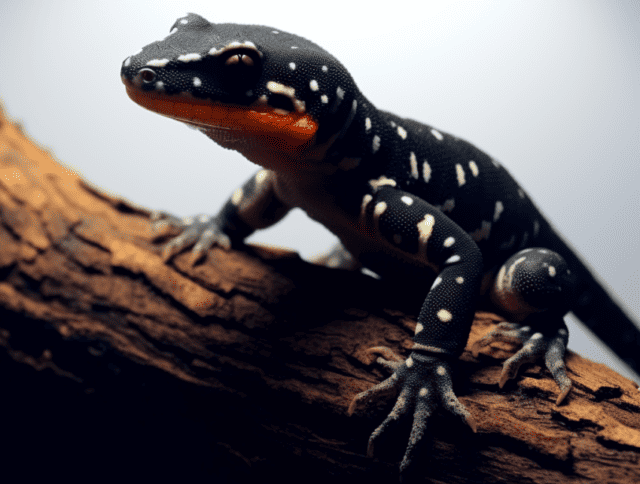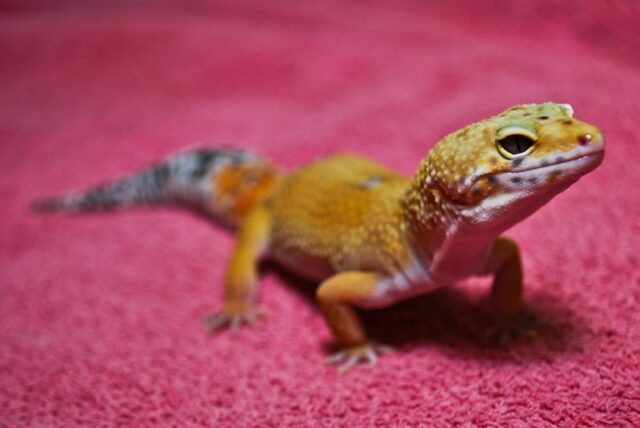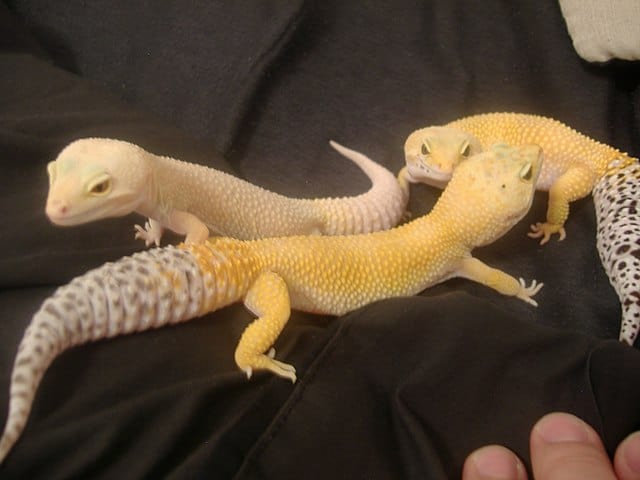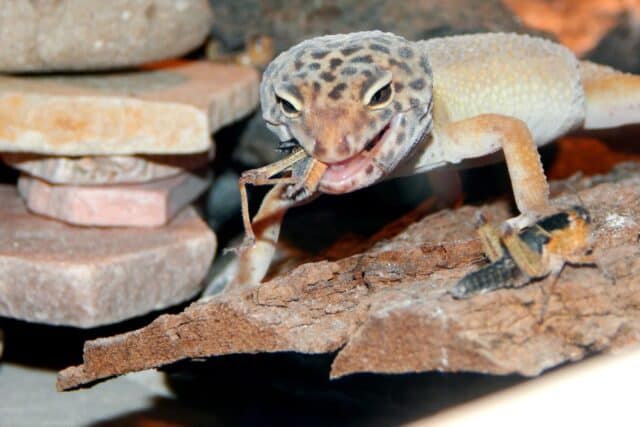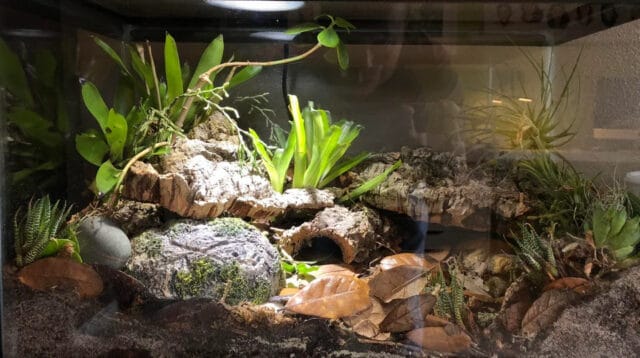How much does a Leopard Gecko cost? This question intrigues many budding reptile aficionados. While these vibrant reptiles have become popular household pets, understanding their financial implications remains a challenge. What’s the initial investment, and what are the recurring costs?
This article aims to shed light on the true costs of owning a leopard gecko, from their unique dietary needs to their habitat setup. Whether you’re on the fence about getting one or just keen to understand the investment, we’ve got you covered.
Leopard Gecko Costs and Other Things to Consider Before Purchasing One
So, you’re thinking about diving into the world of reptiles with a leopard gecko? That’s fantastic! However, before you make that leap, there are several key factors to ponder. Owning a leopard gecko isn’t just about the initial purchase price; it’s a commitment that goes beyond the wallet.
First and foremost, potential owners need to understand the costs involved. While leopard geckos might seem like a budget-friendly pet at first glance, there are ongoing expenses to consider. From their unique diet requirements to habitat maintenance, the costs can add up over time.
Speaking of time, let’s talk about the time commitment. These creatures, though low-maintenance compared to some pets, still require regular care. This includes feeding, cleaning their habitat, and ensuring they have a comfortable environment. It’s essential to be prepared for this responsibility and ensure you can dedicate the necessary time to their well-being.
Now, onto the habitat setup. A proper environment is crucial for the health and happiness of your leopard gecko. This means understanding their diet requirements, which include a mix of crickets, mealworms, and other insects. Additionally, temperature and lighting play a pivotal role in their habitat. Leopard geckos need a specific temperature range to thrive, and the right lighting setup is vital for their circadian rhythm and overall health.
Lastly, where you get your leopard gecko from matters. It’s imperative to find a reputable breeder or pet store. This ensures you’re getting a healthy pet and also supports ethical breeding practices. Researching and asking for recommendations can go a long way in finding a trustworthy source.
What Makes Leopard Geckos Desirable As Pets?
Leopard geckos are fascinating creatures with distinct characteristics that set them apart from other reptiles. Originating from the arid regions of South Asia, these nocturnal animals thrive in rocky, dry grassland environments. Their behavior is often a subject of admiration, as they exhibit a calm and docile nature, making them perfect companions for reptile enthusiasts.
Their popularity as pet reptiles has surged over the years, and it’s not hard to see why. One of the primary reasons is their low maintenance nature. Unlike some other reptiles, leopard geckos don’t require a vast amount of attention, yet they offer the joy and experience of owning a unique pet. Additionally, they boast a long lifespan, often living up to 20 years or more when cared for properly.
So, what makes leopard geckos such desirable pets? Well, apart from their gentle behavior, they come in a wide range of color morphs. This diversity in appearance means that every leopard gecko is unique, allowing owners to choose a pet that resonates with their personal preferences. Moreover, their ease of handling makes them suitable even for beginners.
Price Ranges for Leopard Geckos
When it comes to acquiring a leopard gecko, the price can vary significantly based on several factors. From the place of purchase to the specific morph and coloration, the cost spectrum is broad.
Pet Store Prices
When browsing through pet stores, you’ll quickly notice a range in leopard gecko prices. Typically, pet store prices for these reptiles start from a base amount, but the cost can escalate depending on the morph types and color variations. For instance, a standard leopard gecko might be priced at a more affordable rate, while rarer morphs with unique colorations could fetch a higher price.
On average, common morphs like the Wild Type or High Yellow might be priced between $30 to $50. However, more exotic morphs, such as the Albino or Snow, can range from $50 to $100 or even more. It’s essential to note that these prices can fluctuate based on the store’s location, the gecko’s age, and its overall health.
Additionally, there might be other costs to consider when purchasing from a pet store. These can include setup kits, initial food supplies, or even informational booklets on care. While some stores offer package deals, especially for first-time owners, it’s always a good idea to inquire about any additional costs to ensure you’re getting the best value for your money
Private Breeder Prices
Venturing into the realm of private breeder prices, you’ll find a different landscape compared to pet stores. Private breeders often specialize in breeding leopard geckos, ensuring specific morph types, colorations, and patterns. This specialization often translates to a wider variety of choices but can also mean varied pricing.
On average, leopard geckos from private breeders might start at around $40 for common morphs. However, as you explore rarer morph types, the prices can soar. For instance, a unique coloration like the Black Night might fetch prices upwards of $300, while intricate patterns such as the Tangerine or the Eclipse can range between $100 to $200.
The rarity or uniqueness of a morph significantly affects its price. Breeders invest time, resources, and expertise into producing specific morphs, and when a particular morph is in high demand but low supply, its value increases. Additionally, the lineage or genetics of the gecko can also play a role in its pricing. A leopard gecko with a well-documented and prestigious lineage might command a higher price than one without such a background.
Ongoing Costs of Owning a Leopard Gecko
Owning a leopard gecko is a long-term commitment, and with it comes a series of ongoing costs that every owner should be aware of. These aren’t just one-time expenses; they recur monthly or annually, ensuring your gecko’s well-being and comfort. Let’s delve into the specifics of these costs:
Food Costs: As previously discussed, the diet of a leopard gecko primarily consists of insects like crickets, mealworms, and dubia roaches. Depending on the age and appetite of your gecko, the monthly food costs can vary, but it remains a consistent expense.
Habitat Maintenance Costs: A leopard gecko’s enclosure isn’t something you set up once and forget. Substrates need changing, hides and decorations might need replacement, and the overall habitat requires regular cleaning. These maintenance activities contribute to the monthly costs of ownership.
Veterinary Care Costs: Just like any other pet, leopard geckos need medical attention from time to time. Regular check-ups, potential treatments for health issues, and occasional vaccinations contribute to the veterinary care costs. It’s always a good idea to set aside a budget for unexpected health concerns.
Lighting and Heating Costs: Leopard geckos require specific lighting and heating conditions to mimic their natural habitat. This means investing in heat mats, UVB bulbs, heat lamps, and possibly ceramic heat emitters. While some of these have upfront costs, there’s also the ongoing electricity bill to consider, as these devices run for several hours each day.
Leopard Gecko Food Costs
One of the primary monthly expenses for leopard gecko owners revolves around their diet. The food costs can vary based on several factors, ensuring your gecko receives the nutrition it needs. Leopard geckos are insectivores, which means their diet primarily consists of insects. Common choices include crickets, mealworms, and dubia roaches. Each of these has its own price point, with crickets often being the most affordable and dubia roaches on the higher end.
The frequency of feeding plays a significant role in determining the monthly food costs. Younger geckos require daily feeding, while adults can be fed every other day. The quantity also varies with age; juveniles might consume around 5-10 insects in a session, whereas mature geckos might eat 10-20, depending on their size and appetite.
While the type of food is a major factor in the monthly expenses, the frequency and quantity of feeding also contribute to the overall food costs.
Habitat Maintenance Costs
Maintaining a suitable habitat for a leopard gecko is paramount for its well-being, and with it comes a set of associated costs. The leopard gecko enclosure is more than just a container; it’s a carefully curated environment that mimics their natural habitat, ensuring they thrive and live comfortably.
Substrates: One of the foundational elements of a leopard gecko’s habitat is the substrate. Choices range from reptile carpet, paper towels, to non-loose substrates. Depending on the choice, substrates need periodic replacement, especially if they become soiled or worn out. The type and frequency of replacement can influence the overall habitat maintenance costs.
Hides: Leopard geckos are creatures that value their privacy. Hides provide them with a sense of security and a place to retreat. Over time, these hides can wear out or may need cleaning, leading to potential replacement costs.
Decorations: To make the enclosure more engaging and closer to their natural environment, many owners opt for decorations. This can include artificial plants, rocks, and other decor items. While they add aesthetic value, they also need occasional replacement or cleaning.
Upkeep: The overall upkeep of a leopard gecko enclosure involves regular cleaning to prevent bacterial and fungal growth. This might require specialized cleaning solutions safe for reptiles. Additionally, items like water dishes need cleaning, and water filters (if used) might need cartridge replacements.
Veterinary Care Costs
Ensuring the health and well-being of your leopard gecko goes beyond just providing a suitable habitat and diet. Veterinary care plays a pivotal role in the overall care regimen, and with it comes associated costs. Let’s delve into the specifics of these expenses:
Regular Check-ups: Just like any other pet, leopard geckos benefit from regular veterinary check-ups. These visits allow professionals to assess the overall health of your gecko, ensuring early detection of potential issues. On average, a routine check-up can range from $40 to $70, depending on the region and the veterinary clinic.
Vaccinations: While leopard geckos don’t require a vast array of vaccinations like some other pets, they might need occasional treatments for parasites or other common reptile ailments. The costs for these treatments can vary based on the specific condition and the treatment required.
Health Issues Specific to Leopard Geckos: Leopard geckos, like all animals, have their set of health concerns. Issues like metabolic bone disease, impaction, or respiratory infections can arise. Treating these conditions might involve specialized care, medications, or even surgeries. The costs for these treatments can range significantly based on the severity of the condition and the required interventions.
Lighting and Heating Costs
Creating the perfect environment for a leopard gecko involves more than just a well-maintained habitat; it’s also about ensuring the right temperature and lighting conditions. Both lighting and heating are crucial for their well-being, and understanding the associated costs is essential for any potential or current owner.
Heat Mat: Leopard geckos, being ground-dwelling reptiles, absorb heat from their bellies. A heat mat is an essential tool to provide this belly heat, ensuring proper digestion and overall comfort. Depending on the size and brand, heat mats can range from $15 to $40.
UVB Bulb: While leopard geckos are nocturnal and don’t bask in sunlight like some other reptiles, a UVB bulb can still be beneficial for them. It helps in vitamin D3 synthesis, which in turn aids calcium absorption. A UVB bulb can cost anywhere between $20 to $50.
Heat Lamps: For those who prefer overhead heating or need to boost the ambient temperature of the enclosure, heat lamps are a viable option. These lamps can range from $10 to $30, with the bulbs being an additional cost.
Ceramic Heat Emitter: In colder climates or during winter months, maintaining the right temperature can be challenging. A ceramic heat emitter is a great tool for such situations, providing heat without light. These can cost between $20 to $60, depending on wattage and brand.
Maintenance Costs: While the initial setup has its costs, it’s also essential to factor in the ongoing expenses. Bulbs need replacement, and devices can wear out over time. Additionally, there’s the electricity bill to consider, as these devices run for several hours each day.
Factors That Affect Cost of Owning a Leopard Gecko
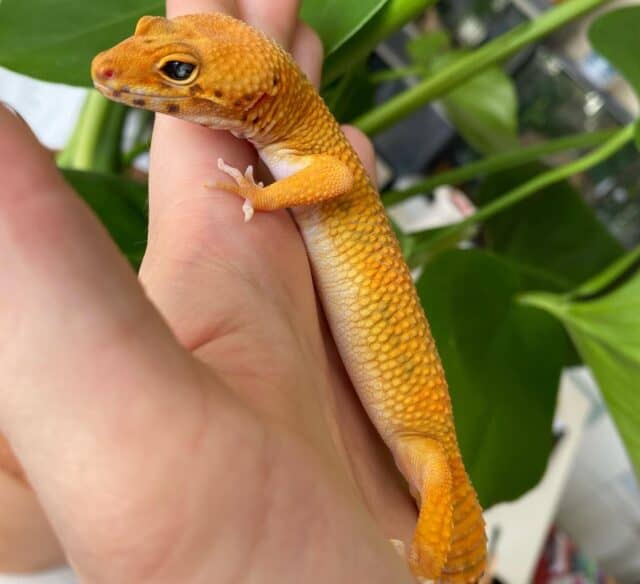
Owning a leopard gecko is a delightful experience, but it’s essential to understand that the costs involved aren’t static. Several factors can influence the overall expenses, from the gecko’s age to its unique morph type.
By understanding these variables, potential and current owners can better anticipate the financial commitment involved.
Age of the Gecko
The age of the leopard gecko plays a pivotal role in determining the cost of ownership. Just like any living creature, a gecko’s needs evolve as it progresses through different stages of life, and these changes can influence the associated expenses.
In the early stages, juvenile geckos require more frequent feeding, which can lead to higher food costs. Their rapid growth during this phase might also necessitate more frequent substrate changes and habitat adjustments. As they transition to adulthood, their feeding frequency decreases, but they might require a larger habitat, impacting the overall costs.
Mature geckos, on the other hand, have relatively stable needs. However, as they age, potential health issues might arise, leading to increased veterinary care costs. It’s also worth noting that older geckos might require special care or dietary adjustments, further influencing the expenses.
Where to Find Affordable Leopard Geckos?
For those looking to welcome a leopard gecko into their homes, there are several avenues to explore to find affordable options. Each source has its advantages and potential pitfalls, so it’s essential to be informed before making a purchase.
Reptile Expos: These events gather reptile enthusiasts, breeders, and sellers under one roof. They offer a wide range of leopard geckos, often at competitive prices. The benefit of reptile expos is the ability to see the gecko in person and interact with knowledgeable breeders. However, the drawback might be the overwhelming choices and the potential for impulse purchases.
Online Marketplaces: Websites dedicated to reptile sales or general platforms like eBay can be treasure troves for affordable leopard geckos. The advantage is the convenience of browsing from home and often finding rare morphs. The downside is the inability to see the gecko in person before purchase and potential shipping stress for the animal.
Classified Ads: Local classifieds, whether online or in print, can be a source of affordable leopard geckos. These ads often come from individual sellers looking to rehome their pets. While the prices might be lower, it’s essential to inquire about the gecko’s health and history. In some cases, adoption of a leopard gecko without any cost is also an option.
Local Reptile Organizations: Joining or reaching out to local reptile clubs or organizations can lead to connections with breeders or owners looking to sell or rehome their geckos. These organizations often prioritize the well-being of the animals, ensuring healthy and well-cared-for geckos. The drawback might be limited availability or waiting periods.
